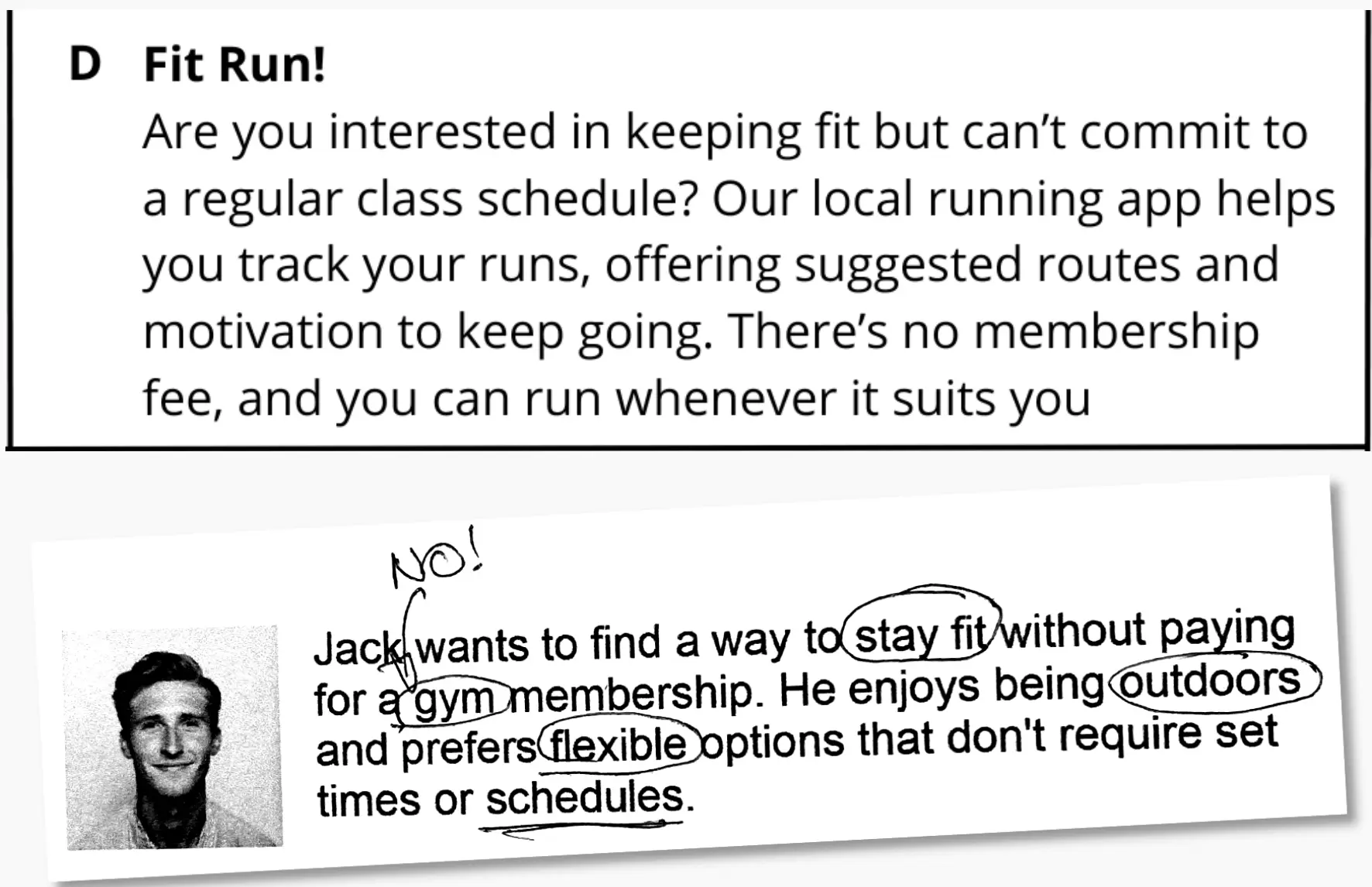A New Hobby for Jack and Rachel

In PET Reading Part 2, it’s a good idea to read the bio first—the description of the person—before looking at the longer texts. This will help you look for the right details in the texts. Let’s break this down using the example of Jack and Rachel.
step one: note the person's needs
Start with the bios. In the exam, underline key details about what each person wants.
practise step one - In this exercise, you will read two bios from the PET Reading Part 2. As you read, note the key points and click Submit to check your answers.
the bios
Jack:

Rachel:

In the exam, your notes will look something like this:

step two: scan the texts
Now that you know what each person wants, look for matching details in the texts, but not necessarily matching words. You’re not reading every word—you’re scanning for key information.

Jack
Let's do Jack together. Look at what he wants and scan the first text; this should not take more than 5 seconds!

The title will immediately tell you this option is not for Jack. He wants to do exercise. This option says nothing about exercise. You can scan the text very quickly to check, but it is clear this is not an option for Jack. Eliminate!

Be very careful here. Yes, there is no gym, it is outdoors and it's free. It looks pretty good but is it perfect? Remember, Jack wants flexible options but this group is only on the weekend!

Nothing about fitness or outdoors here! You can scan the text very quickly to understand this. Remember, you do not need to read every word. As soon as you see painting classes you can go to the next option because people do not get fit by doing painting classes!

Flexible, no membership fee, outdoors and fitness. Is this for Jack? → Yes! This is exactly what he’s looking for!
step three: eliminate the wrong options
If you’ve scanned the texts and you still can't find a good option, you can eliminate the options that don’t fit the person’s needs. Here’s how you do it:
- For Jack, we eliminate:
- Text A (not fitness-related).
- Text B (fixed schedule on weekends).
- Text C (painting, not active or outdoors).
So, the only remaining option is Text D, which fits his love for outdoor activities, flexibility, and fitness.
step four: match each person with the best text
Now that you’ve carefully considered the texts and eliminated the wrong ones, you can confidently match Jack with Text D.


Rachel
Now it's your turn! Scan the texts and find the best option for Rachel. Remember look at what she wants first and then scan the texts.
steps one and two: note and scan


step three: eliminate the wrong options
If you’ve scanned the texts and you still can't find a good option, you can eliminate the options that don’t fit Rachel's needs.
step four: match each person with the best text
Now that you’ve carefully considered the texts and eliminated the wrong ones, have you found the best text for Rachel?
Text C is the correct answer. We can eliminate Text B and Text D immediately because they are sports related. Text A is not bad but it has two elements that do not make it fit as well as Text C. Firstly, Rachel is not very interested in sports and in Text A there is a lot of walking around. Secondly, Text C seems to offer more of a chance for social interaction and creativity.

why this works
- Reading the person’s bio first gives you a clear idea of what details are important.
- When you scan the texts, you know exactly what you’re looking for—Jack’s need for flexibility and fitness and Rachel’s desire for creativity and socializing.
- This method helps you filter out unnecessary information quickly and focus on what’s relevant.
With practice, this approach will become second nature, and you’ll be able to read between the lines to find the best matches without falling into the trap of simply matching obvious keywords.


